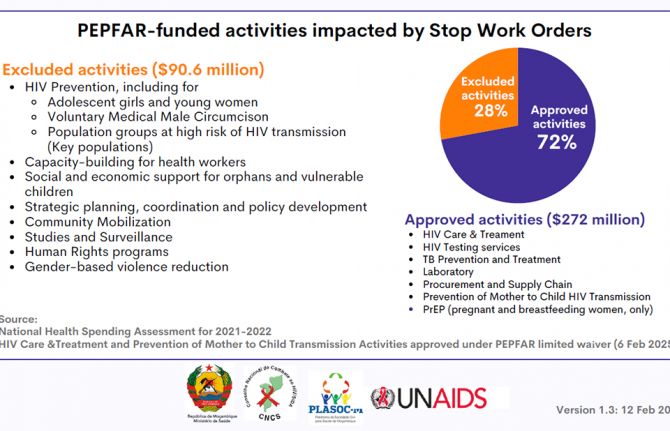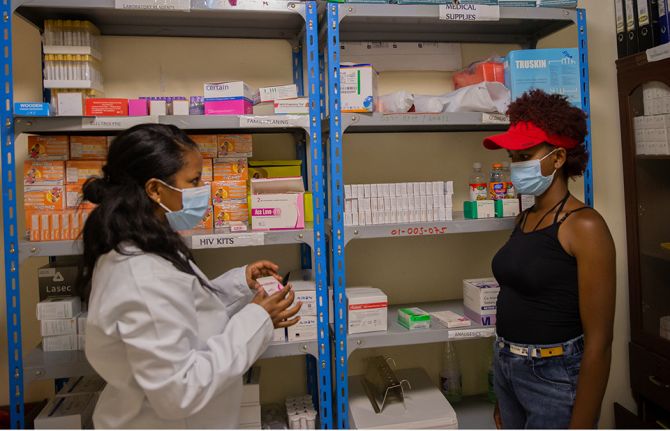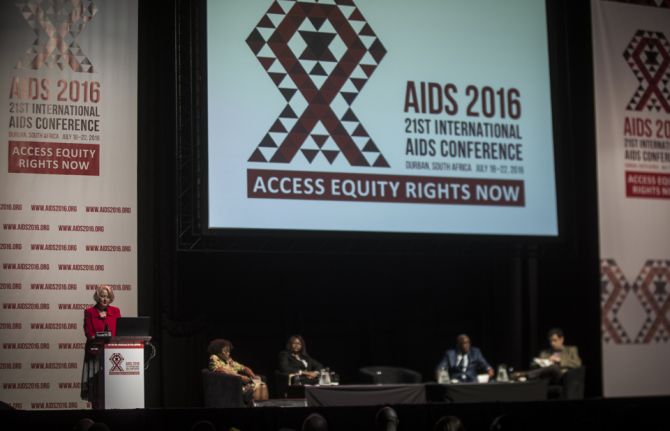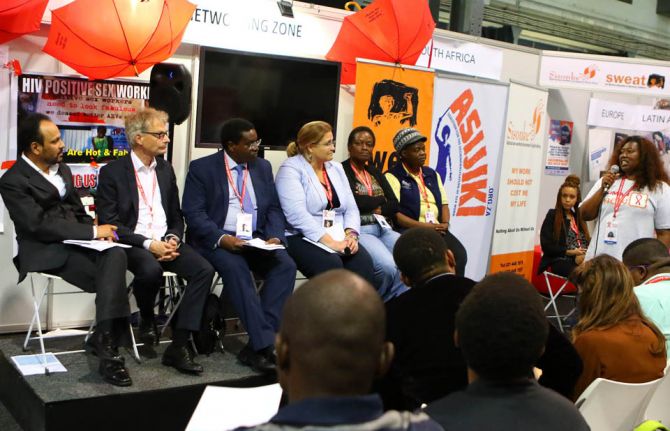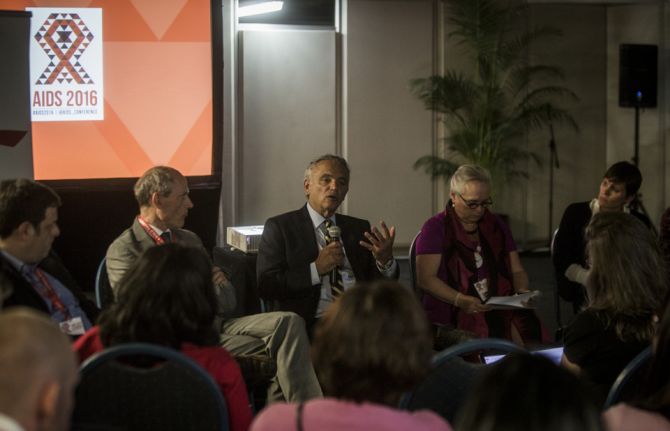
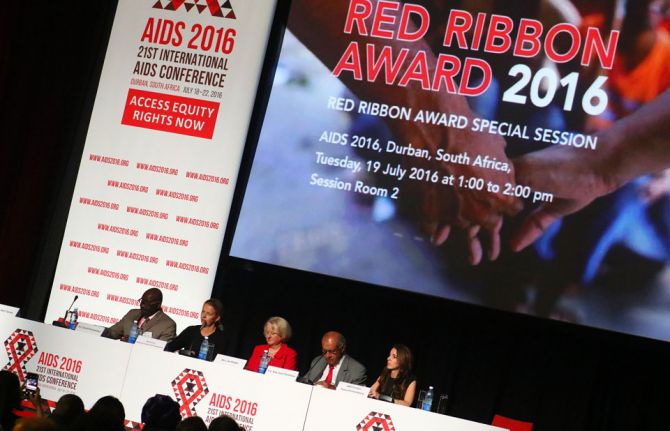

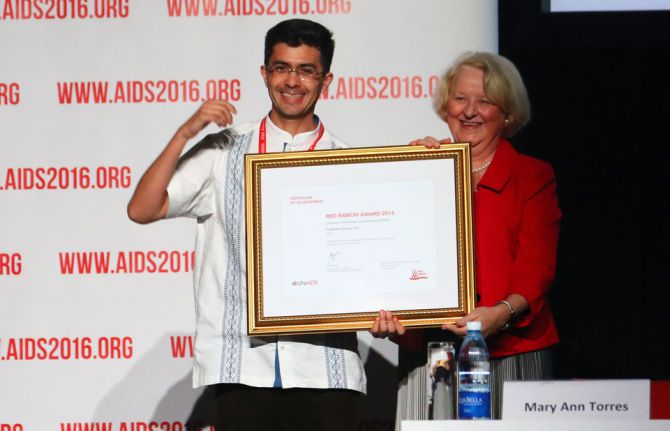
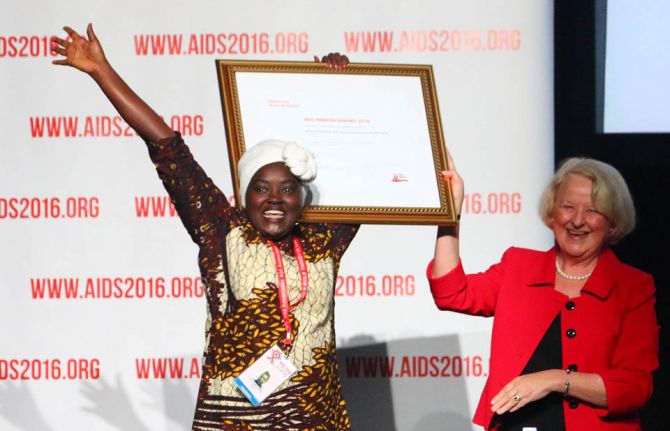
Press Release
Ten organizations receive Red Ribbon Award for outstanding community leadership on AIDS
19 July 2016 19 July 2016DURBAN, 19 July 2016—Ten exceptional community-based organizations have won the 2016 Red Ribbon Award for their inspiring work towards ending or reducing the impact of the AIDS epidemic. They were presented with the prize in a special session at the 21st International AIDS Conference (AIDS 2016) in Durban, South Africa.
“Across regions and cultures, communities are showing the world that ending AIDS is possible. Their courage, innovation and leadership is helping us overcome barriers and better respond to the needs of those most affected by the epidemic.” said UNAIDS Executive Director Michel Sidibe.
The 2016 winning organizations are from Burundi, Mexico, Belize, Kenya, Nigeria, Iran (Islamic Republic of), Nepal, Chile, and New Zealand. Almost 1,000 nominations were received from more than 120 countries, for the Award, which is hosted by UNAIDS in partnership with AIDS 2016, the Global Network of People Living with HIV, the International Community of Women Living with HIV/AIDS, the International Council of AIDS Service Organizations and Irish Aid. A global panel of civil society representatives selected the finalists from a shortlist determined by regional panels.
Each of the winning organizations will receive a US$ 10,000 grant and have been invited to participate in AIDS 2016, where they organize the Community Dialogue Space in the Global Village.
At the Red Ribbon Award special session, the winners were congratulated by Her Royal Highness, Princess Mabel van Oranje of the Netherlands; Her Royal Highness, Princess Tessy of Luxembourg; Minister of Health and Child Welfare of Zimbabwe, David Parirenyatwa; Former President of Fiji H.E. Epeli Nailatikau, and Jan Beagle, Deputy Executive Director, UNAIDS.
“Community-based organizations are taking the lead in shaping the course of the AIDS response. The organizations here today - recipients of the 2016 Red Ribbon Award - are examples to us all of what it truly means to fast track the AIDS response, and to do so in a way which is inclusive, and that advances human rights and gender equality”, Jan Beagle, Deputy Executive Director, UNAIDS
The Red Ribbon Award was first presented in 2006 and since then has been awarded every two years at the International AIDS Conference. This year there were five award categories.
Category one: Good Health & Wellbeing (SDG 3)
Réseau National des Jeunes vivants avec le VIH/SIDA
Colectivo Seres, A.C.
C-Net+
Category two: Reduced Inequalities (SDG 10)
Kenya Sex Worker’s Alliance
Positive Action for Treatment Access (PATA)
Category three: Gender Equality (SDG 5)
Tehran Positive Club
Chitwan Sakriya Women’s Foundation
Category four: Just, Peaceful, & Inclusive Societies (SDG 16)
YouthRISE
Red Nacional de Pueblos Originarios en Respuesta al SIDA
Category five: Global Partnerships (SDG 17)
INA Foundation
About the Sponsors
UNAIDS
The Joint United Nations Programme on HIV/AIDS (UNAIDS) leads and inspires the world to achieve its shared vision of zero new HIV infections, zero discrimination and zero AIDS-related deaths. UNAIDS unites the efforts of 11 UN organizations—UNHCR, UNICEF, WFP, UNDP, UNFPA, UNODC, UN Women, ILO, UNESCO, WHO and the World Bank—and works closely with global and national partners towards ending the AIDS epidemic by 2030 as part of the Sustainable Development Goals. Learn more at unaids.org and connect with us on Facebook, Twitter, Instagram and Youtube.
UN partners
The UN partners involved in the Red Ribbon Award initiative bring together the efforts and resources of all UNAIDS Cosponsors and the UNAIDS Secretariat.
AIDS 2016
The XXI International AIDS Conference (AIDS 2016) is the premier gathering for those working in the field of HIV, as well as policy makers, persons living with HIV and other individuals committed to ending the pandemic. It is a chance for stakeholders to take stock of where the epidemic is, evaluate recent scientific developments and lessons learnt, and collectively chart a course forward. AIDS 2016 will be held in Durban, South Africa from 18 to 22 July 2016. (www.aids2016.org). The International AIDS Society is the convener and custodian of the conference.
Global Network of People Living with HIV
GNP+ is the global network for and by people living with HIV. GNP+ advocates to improve the quality of life of people living with HIV. Driven by the needs of people living with HIV worldwide, GNP+ supports people living with HIV through their organizations and networks. GNP+ works to ensure equitable access to health and social services, by focusing on social justice, rights and more meaningful involvement of people living with HIV in programme and policy development – the GIPA principle. (www.gnpplus.net)
International Community of Women Living with HIV/AIDS
ICW Global emerged to look for answers facing the desperate lack of support, information and services available for women living with HIV. The organization promotes the leadership and involvement of women living with HIV in spaces where policies and programmes are developed and implemented and where the decisions that affect the life of thousands of people who live with the virus are made. The vision is for a just world where women living with HIV are leaders in HIV programmes and policy and realize their universal rights. They dream of a world where women, young women, girls, adolescents living with HIV have full access to care and treatment and enjoy all of their rights: sexual, reproductive, legal, economic and health, regardless of culture, age, religion, sexuality, race or socio-economic status. (www.icwglobal.org)
International Council of AIDS Service Organizations
Founded in 1991, the International Council of AIDS Service Organizations’ (ICASO) mission is to mobilize and support diverse community organizations to build an effective global response to end AIDS. This is done within a vision of a world where people living with and affected by HIV can enjoy life free from stigma, discrimination, and persecution, and have access to prevention, treatment and care. The ICASO network operates globally, regionally and locally, and reaches over 100 countries internationally. (www.icaso.org)
Irish Aid
Irish Aid is the Government of Ireland's programme of assistance to developing countries. Its aid philosophy is rooted in Ireland's foreign policy, in particular its objectives of peace and justice. The international development policy "One World, One Future" reflects Ireland's longstanding commitment to human rights and fairness in international relations and is inseparable from Irish foreign policy as a whole. The Irish Aid programme has as its absolute priority the reduction of poverty, inequality and exclusion in developing countries, with a strong geographic focus on Sub-Saharan Africa. Improving access to quality essential social services such as health, education, services related to HIV and AIDS, and social protection is seen as key to the realisation of human rights, the reduction of poverty, hunger and inequality and the promotion of inclusive economic growth. (http://www.irishaid.gov.ie)
About the Red Ribbon Award
The red ribbon is a global symbol in the movement to address AIDS. The Red Ribbon Award, presented every two years at the International AIDS Conference, is designed to honor and celebrate community based organizations for their outstanding initiatives that show leadership in reducing the spread and impact of AIDS. The award is a joint effort of the UNAIDS family and as such, this year it will place particular emphasis on the organization's newly approved global priority areas of action.
The Red Ribbon Award was first given in 2006 and has recognized 85 organizations from over 50 different countries since then as leading community-based responses to AIDS. Such organizations lie at the heart of the response to the AIDS epidemic – displaying extraordinary courage, resilience and strength in addressing one of the greatest challenges of our time. Using creative and sustainable ways to promote prevention of sexual transmission, and prevention among people who use drugs, provide treatment, care, and support to people living with HIV and demonstrating innovation in the face of stigma and discrimination through advocacy and human rights, and stopping new HIV infections in children and keeping mothers alive, and taking care of women’s health, these examples of community leadership are showing us in practical terms how to reverse a global epidemic – one community at a time.
Press centre
Download the printable version (PDF)

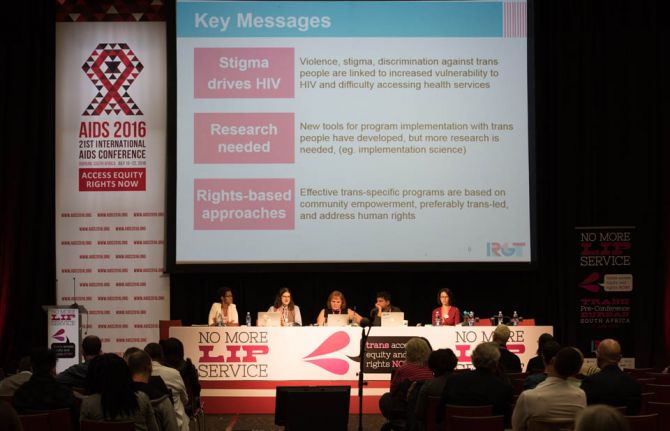
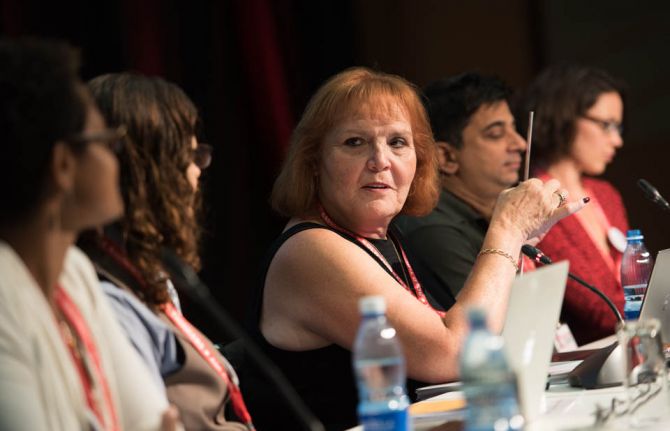
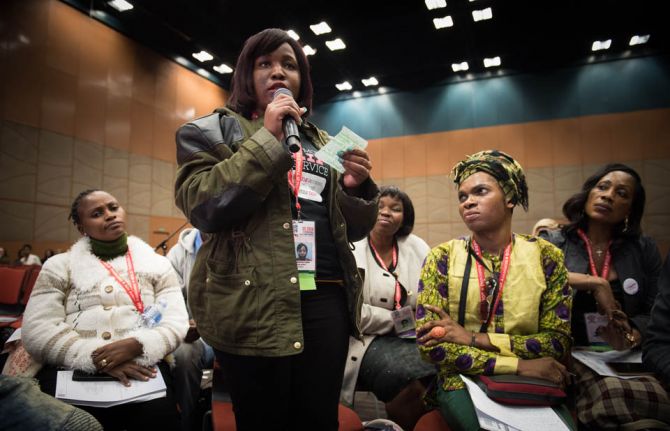
Update
Transgender preconference meeting
17 July 2016
17 July 2016 17 July 2016On 17 July, more than 400 representatives of transgender women and their supporters took part in the first transgender preconference meeting to be held at an international AIDS conference. The event, entitled “No more lip service: trans access, equity and rights now!”, was held in Durban, South Africa, on the eve of the 21st International AIDS Conference. It was organized by the Global Network of Transgender Women and HIV.
The event provided a forum to explore how services can be designed and implemented to be acceptable and accessible to transgender women, as outlined in a recently published practical guidance document, and included special sessions on human rights and gender-based violence. There were also presentations on the latest research into transgender people’s health in the Lancet and the Journal of the International AIDS Society.
The programme also looked at how transgender people could be better engaged in the Global Fund to Fight AIDS, Tuberculosis and Malaria. UNAIDS Deputy Executive Director Luiz Loures and the United States Global AIDS Coordinator and Special Representative for Global Health Diplomacy, Deborah Birx, spoke at the event and stressed the importance of involving transgender people in the AIDS response.
Quotes
“Our issues and vulnerabilities are more than just about HIV. Resources for transgender people are not reaching trans organizations and they do not have access to funding.”
“Fragile communities are everywhere and history shows that changes happen when the disempowered say “enough is enough” and take charge. The trans world is transforming the AIDS response.”
“Solutions lie in peer-led implementation. We see you, we hear you today and we want to be part of the solution with you.”
“We haven’t served the trans community well. We need to pay attention to quality risk assessment, not just financial risk assessment.”
Related
Documents
21st International AIDS Conference (AIDS 2016), Durban, South Africa, 18-22 July 2016
The International AIDS Conference is the premier gathering for those working in the field of HIV, as well as policy makers, persons living with HIV and other individuals committed to ending the pandemic. It is a chance to assess where we are, evaluate recent scientific developments and lessons learnt, and collectively chart a course forward.
Related
ICASA 2017
06 December 2017
72nd UN General Assembly, 19-25 September 2017
22 September 2017
Benin
03 March 2017
71st United Nations General Assembly
23 September 2016
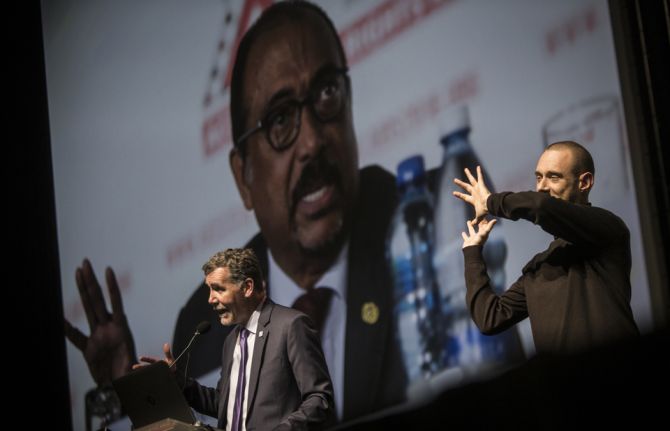 The 2016 International AIDS Conference closes with a call to reject complacency in the AIDS response
The 2016 International AIDS Conference closes with a call to reject complacency in the AIDS response

25 July 2016
 Quilts celebrate South Africa’s journey
Quilts celebrate South Africa’s journey
22 July 2016
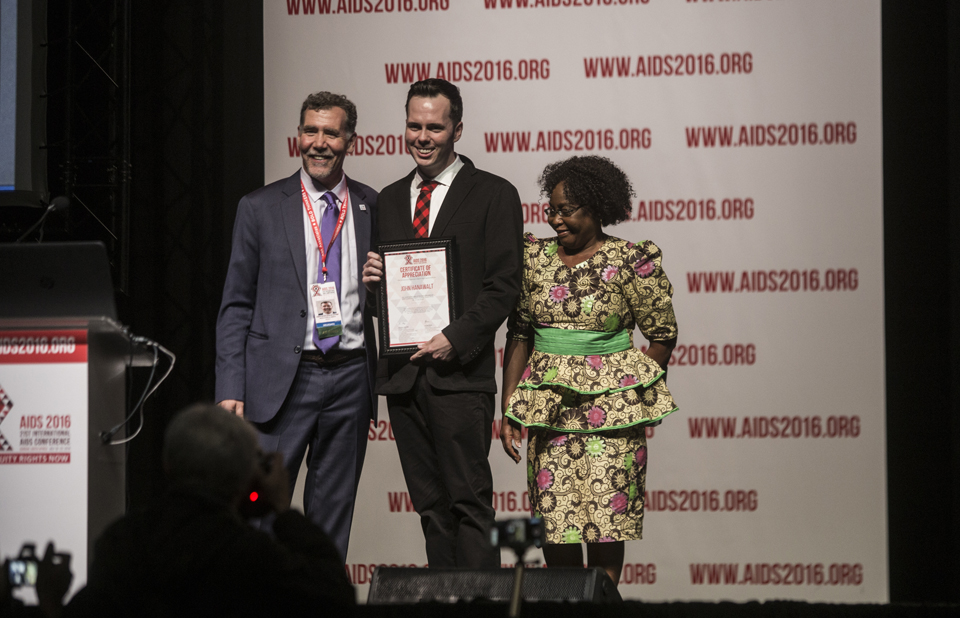
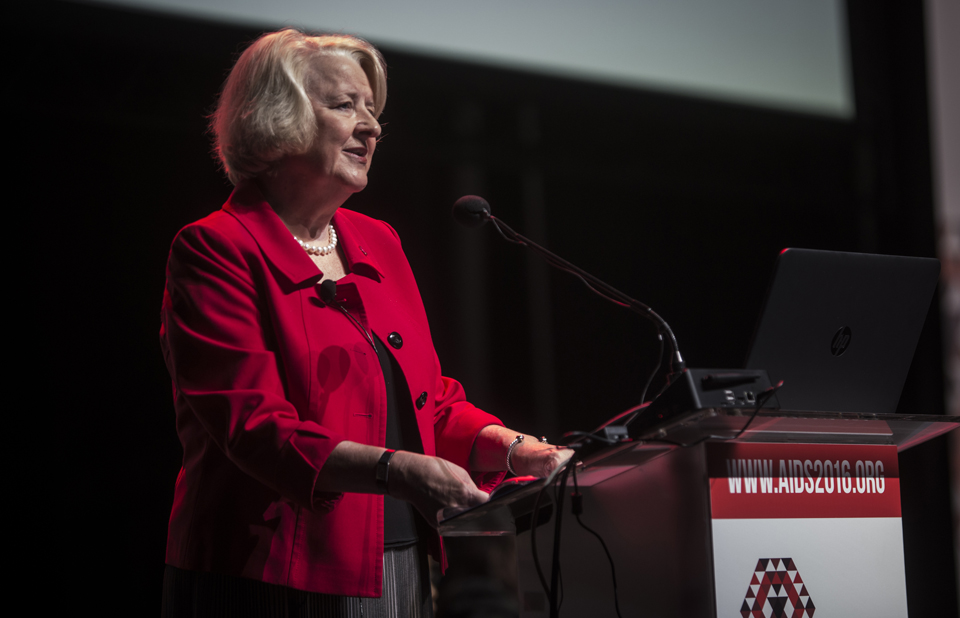
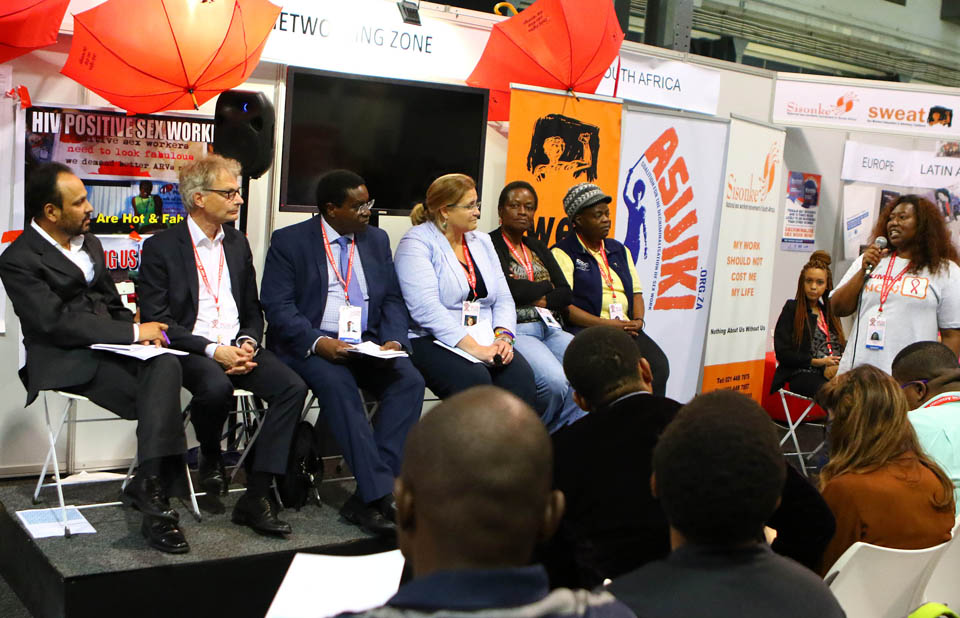
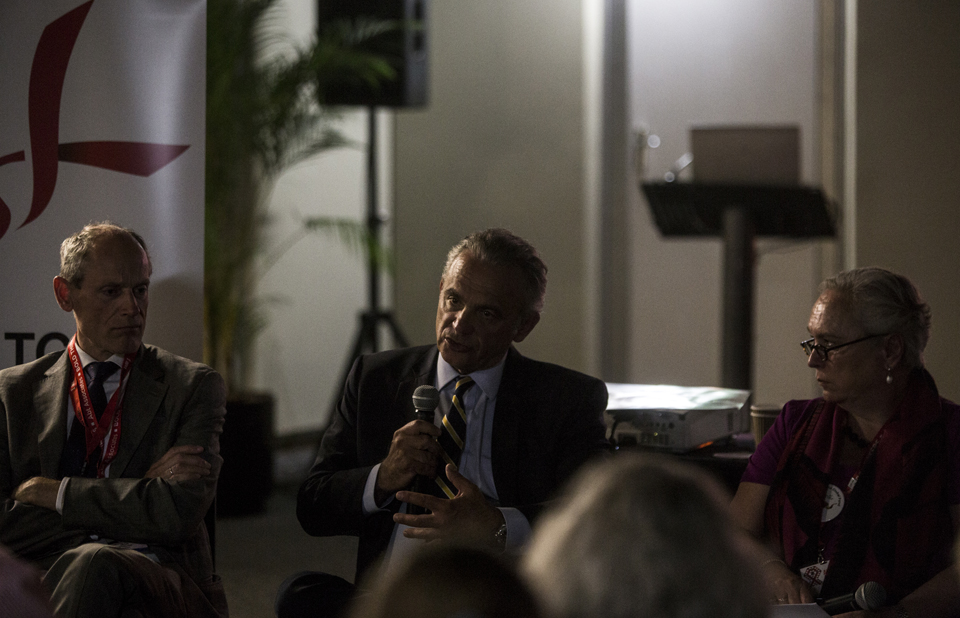
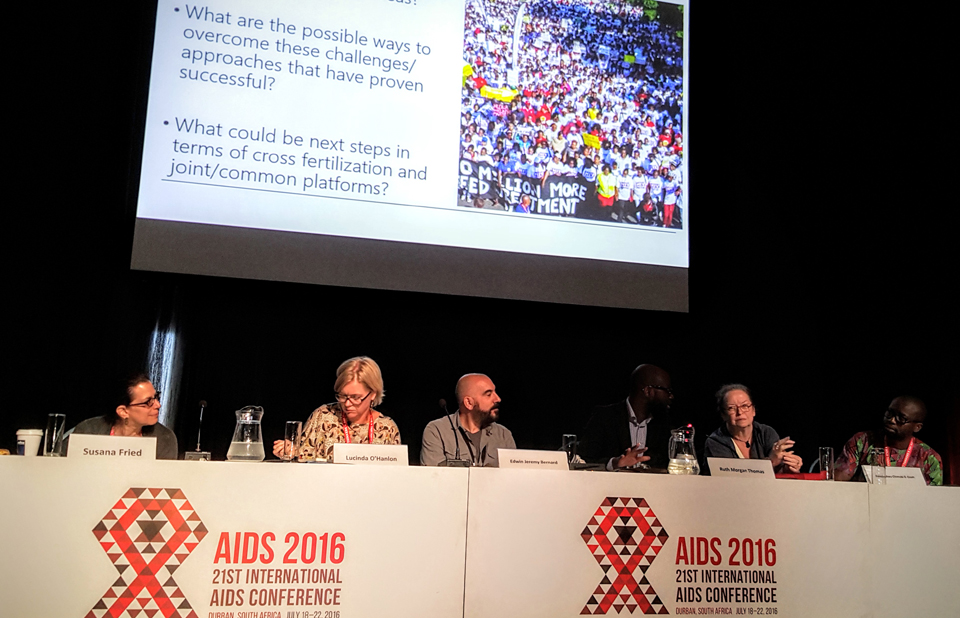
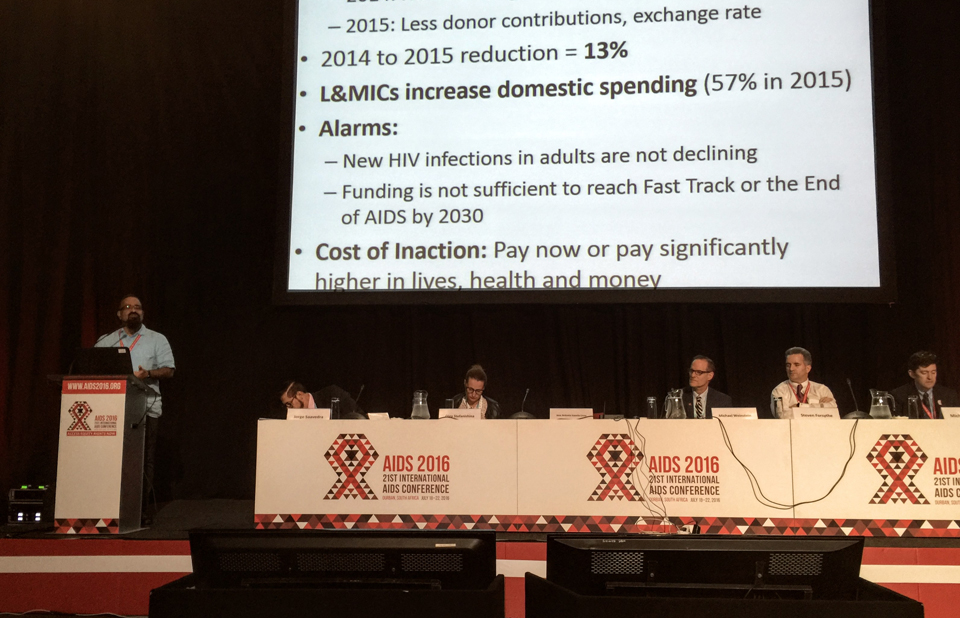
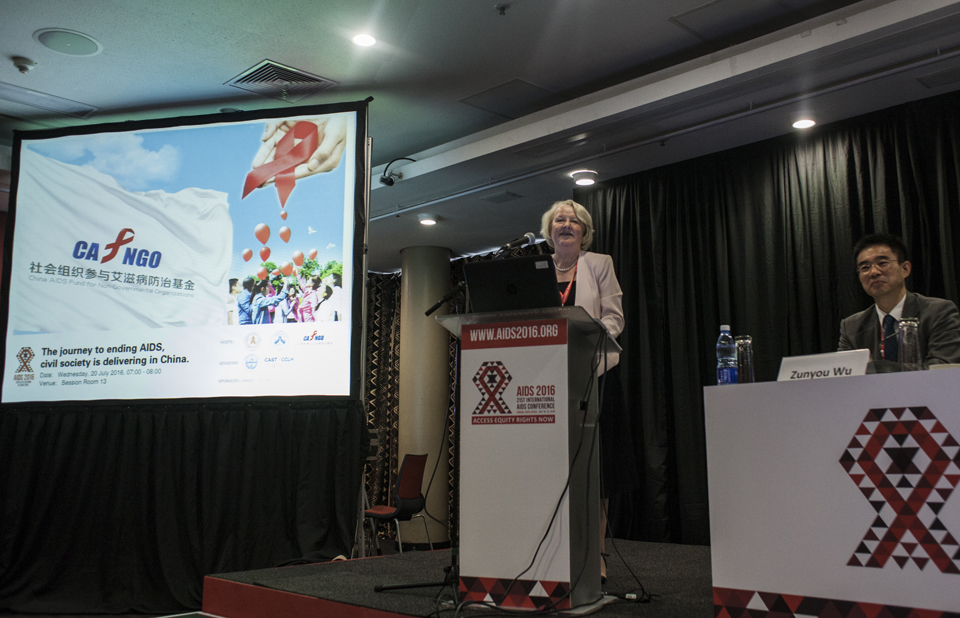
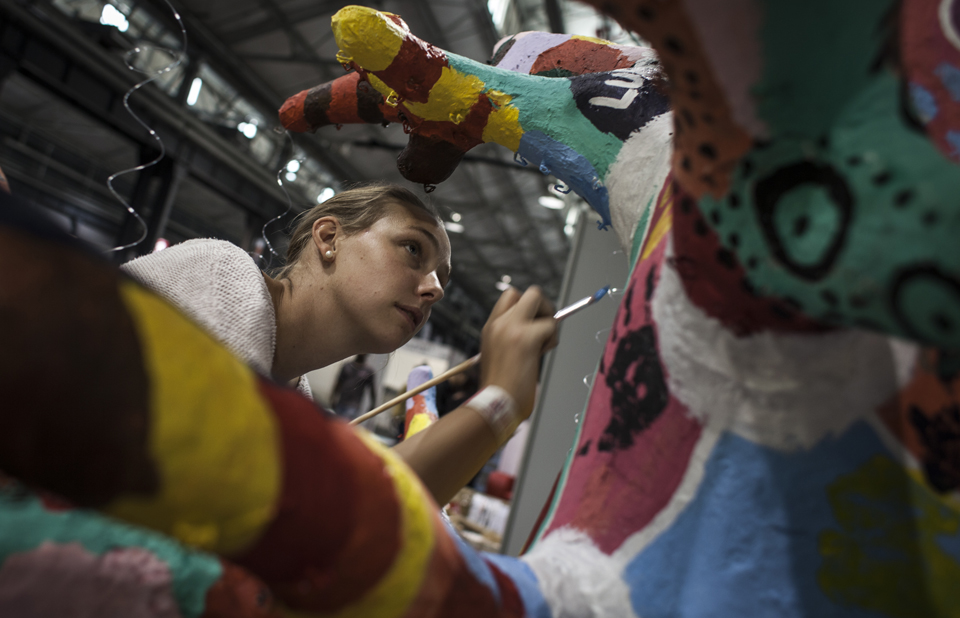
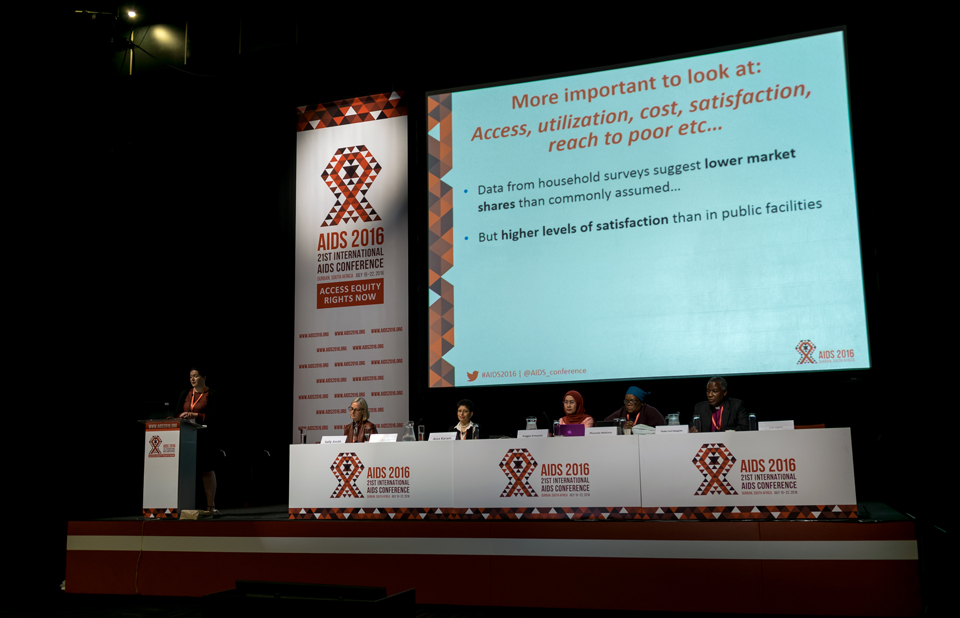




Press Release
UNAIDS warns that after significant reductions, declines in new HIV infections among adults have stalled and are rising in some regions
11 July 2016 11 July 2016Globally, new HIV infections among adults and children were reduced by 40% since the peak in 1997. However, new analysis from UNAIDS shows that new HIV infections among adults have stalled, failing to decline for at least five years. The report outlines what is needed to step up prevention efforts
GENEVA, 12 July 2016—A new report by UNAIDS reveals concerning trends in new HIV infections among adults. The Prevention gap report shows that while significant progress is being made in stopping new HIV infections among children (new HIV infections have declined by more than 70% among children since 2001 and are continuing to decline), the decline in new HIV infections among adults has stalled. The report shows that HIV prevention urgently needs to be scaled up among this age group.
HIV prevention gap among adults
The Prevention gap report shows that an estimated 1.9 million adults have become infected with HIV every year for at least the past five years and that new HIV infections among adults are rising in some regions. The Prevention gap report gives the clear message that HIV prevention efforts need to be increased in order to stay on the Fast-Track to ending AIDS by 2030.
- Eastern Europe and central Asia saw a 57% increase in annual new HIV infections between 2010 and 2015.
- After years of steady decline, the Caribbean saw an 9% rise in annual new HIV infections among adults between 2010 and 2015.
- In the Middle East and North Africa, annual new HIV infections increased by 4% between 2010 and 2015.
- There have been no significant declines in any other regions of the world.
- In Latin America the annual number of new adult HIV infections increased by 2% since 2010; New HIV infections declined marginally in western and central Europe and North America and in western and central Africa since 2010; New HIV infections among adults declined by 4% in eastern and southern Africa since 2010, and by 3% in Asia and the Pacific since 2010.
“We are sounding the alarm,” said Michel Sidibé, Executive Director of UNAIDS. “The power of prevention is not being realized. If there is a resurgence in new HIV infections now, the epidemic will become impossible to control. The world needs to take urgent and immediate action to close the prevention gap.”
The AIDS epidemic has had a huge impact over the past 35 years. Since the start of the epidemic, 35 million people have died from AIDS-related illnesses and an estimated 78 million people have become infected with HIV.
Equity and access for key populations
In 2014, key populations, including gay men and other men who have sex with men, sex workers and their clients, transgender people, people who inject drugs and prisoners, accounted for 35% of new HIV infections globally. It is estimated that men who have sex with men are 24 times more likely to become infected with HIV than the general population, while sex workers are 10 times more likely and people who inject drugs are 24 times more likely to become infected than the general population. In addition, transgender people are 49 times more likely to be living with HIV and prisoners are five times more likely to be living with HIV than adults in the general population
It is essential for key populations to have access to the full range of HIV prevention options in order to protect themselves and their sexual partners from HIV. “Today, we have multiple prevention options,” said Mr Sidibé. “The issue is access—if people do not feel safe or have the means to access combination HIV prevention services we will not end this epidemic.”
Prevention dividend from HIV treatment still to be realized
The report highlights that the major hopes for antiretroviral therapy to have an impact on preventing new HIV infections are starting to be realized, although the full benefits may not be seen for some years.
The Prevention gap report estimates that over half of all people living with HIV, 57%, now know their HIV status, that 46% of all people living with HIV have access to antiretroviral treatment and that 38% of all people living with HIV have viral suppression, keeping them healthy and preventing onward transmission of the virus. This underscores the urgent need for the UNAIDS 90–90–90 targets to be met to realize the full potential of antiretroviral therapy. The 90–90–90 targets are 90% of people knowing their HIV status, 90% of people who know their status accessing antiretroviral treatment and 90% of people on treatment having suppressed viral loads.
HIV prevention funding gap
The reports of rising numbers of new HIV infections are coming as data reveal donor funding has declined to its lowest levels since 2010. International donor contributions dropped from a peak of US$ 9.7 billion in 2013 to US$ 8.1 billion in 2015. Low- and middle-income countries are stepping up to fill the gap, with domestic resources accounting for 57% of the US$ 19.2 billion total funding in 2015.
The report notes that although international funding, the main source of funding for HIV prevention for people at higher risk of HIV, has reduced, some major donors are making bold commitments to ensure that funding reaches the people most affected by HIV. In June 2016, the United States of America announced the launch of a new US$ 100 million Key Populations Investment Fund to increase access to HIV services for key populations.
The current allocation of resources for HIV prevention is falling far short of what is needed. Currently, 20% of global resources for HIV are being spent on HIV prevention. The report indicates that to have maximum impact funding should focus on the location and population approach in order to reach people at higher risk with combination prevention options where they live and work.
Regional HIV prevention gaps
The report details the trajectory of new HIV infections and looks at which populations and which locations are most affected. It also outlines where countries need to make more tailored HIV prevention investments.
In eastern and southern Africa, for example, three quarters of all new HIV infections among adolescents aged 10–19 years are among adolescent girls. Adolescent girls are often prevented from accessing HIV services owing to gender inequality, a lack of age-appropriate HIV services, stigma, a lack of decision-making power and gender-based violence. In 2014, only 57% of countries globally (of 104 countries reporting) had an HIV strategy that included a specific budget for women. It is estimated that worldwide only three in 10 adolescent girls and young women between the ages of 15 and 24 years have comprehensive and correct knowledge about HIV. Reaching adolescent girls and young women, especially in sub-Saharan Africa, will be a key factor in ending the AIDS epidemic.
In eastern Europe and central Asia, 51% of new HIV infections occur among people who inject drugs. More than 80% of the region’s new HIV infections in 2015 were in the Russian Federation. The epidemic is concentrated predominantly among key populations and their sexual partners, in particular people who inject drugs, who accounted for more than half of new HIV infections in 2015. However there is very low coverage of prevention programmes, in particular harm-reduction interventions among people who inject drugs.
In the Middle East and North Africa, 96% of new HIV infections occur among key populations, predominantly among people who inject drugs, men who have sex with men and female sex workers and their sexual partners. However, prevention programmes for men who have sex with men and sex workers rarely receive support from domestic resources or through public services.
In western and central Europe and North America, around half of all new HIV infections occur among gay men and other men who have sex with men and while a significant proportion of resources are being invested for this key population group, prevention efforts are failing to have an impact. Between 2010 and 2014, new HIV diagnoses among men who have sex with men increased by 17% in western and central Europe, and by 8% in North America.
The report shows the complexity of the AIDS epidemic and how the populations and locations most affected change dramatically across each country and region. It also shows that investments need to be made in effective HIV programmes that are proven to make a significant difference in reducing the number of new HIV infections.
Combination HIV prevention, gaps and opportunities
Compared to 20 years ago when HIV prevention options were limited, there is now a range of options available to suit people’s needs throughout their lives to ensure that they can protect themselves from HIV.
UNAIDS urges countries to take a location and population approach to HIV programming efforts following five prevention pillars, to be delivered comprehensively and in combination:
- Programmes for young women and adolescent girls and their male partners in high-prevalence locations.
- Key population services in all countries.
- Strengthened national condom programmes.
- Voluntary medical male circumcision in priority countries.
- PrEP for population groups at higher risk of HIV infection.
Closing the HIV prevention gap
“Science, innovation and research have provided new and effective HIV prevention options, rapid diagnostics and improved treatment for HIV,” said Mr Sidibé. “Investing in innovation is the only way to secure the next big breakthrough—a cure or a vaccine.”
The data in the report, collected from more than 160 countries, demonstrate that enormous gains can be achieved when concerted efforts are made. It outlines that by 2015 some 17 million people had access to antiretroviral therapy, double the number in 2010 and 22 times the number in 2000.
UNAIDS will be calling on implementers, innovators, communities, scientists, donors and others at the 2016 International AIDS Conference, taking place from 18 to 22 July, in Durban, South Africa, to close the prevention gap.
|
Global summary of the AIDS epidemic in 2015 |
||
|
Number of people living with HIV |
Total |
36.7 million [34.0 million–39.8 million] |
|
Adults |
34.9 million [32.4 million–37.9 million] |
|
|
Women |
17.8 million [16.4 million–19.4 million] |
|
|
Children (<15 years) |
1.8 million [1.5 million–2.0 million] |
|
|
Number of people newly infected with HIV |
Total |
2.1 million [1.8 million–2.4 million] |
|
Adults |
1.9 million [1.7 million–2.2 million] |
|
|
Children (<15 years) |
150 000 [110 000–190 000] |
|
|
AIDS-related deaths |
Total |
1.1 million [940 000–1.3 million] |
|
Adults |
1.0 million [840 000–1.2 million] |
|
|
Children (<15 years) |
110 000 [84 000–130 000] |
|
|
Number of people on HIV treatment |
Total |
17 million |
UNAIDS
The Joint United Nations Programme on HIV/AIDS (UNAIDS) leads and inspires the world to achieve its shared vision of zero new HIV infections, zero discrimination and zero AIDS-related deaths. UNAIDS unites the efforts of 11 UN organizations—UNHCR, UNICEF, WFP, UNDP, UNFPA, UNODC, UN Women, ILO, UNESCO, WHO and the World Bank—and works closely with global and national partners towards ending the AIDS epidemic by 2030 as part of the Sustainable Development Goals. Learn more at unaids.org and connect with us on Facebook, Twitter, Instagram and YouTube.
Press centre
Download the printable version (PDF)

